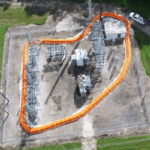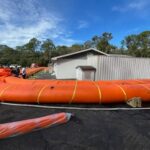Natural disasters, particularly floods, are an escalating concern for those living in high-risk areas. With extreme weather events becoming more frequent and severe, staying informed about updates to flood relief and recovery programs is vital for homeowners and business owners. In 2025, several critical changes and proposals have emerged that could directly affect you. Let’s explore the latest developments and how they can benefit property owners.
Federal Disaster Tax Relief Act: Financial Support for Flood Victims
Enacted in December 2024, the Federal Disaster Tax Relief Act allocates $4.9 billion for victims of natural disasters, retroactive to December 2020.
Key Updates:
- Loss Deduction: Property owners can now deduct disaster-related losses exceeding $500 without the typical 10% adjusted gross income threshold.
- Income Exclusions: Payments received for certain disasters, such as wildfires or train derailments, can now be excluded from taxable income.
What This Means for You: If your property has been damaged by a flood, you can access more substantial deductions and financial relief with fewer restrictions, easing the financial burden of recovery.
FEMA Disaster Assistance Program: Faster Aid and Greater Flexibility
In early 2024, FEMA introduced significant updates to its disaster assistance program to address the growing demand for aid. These changes, effective March 2024, aim to deliver quicker and more adaptable relief to disaster survivors.
Key Improvements:
- Immediate Financial Assistance: Impacted individuals now receive a one-time $750 payment per person to cover urgent needs like food, shelter, and evacuation.
- Flexible Housing Options: A new fund enables survivors to choose accommodations, including staying with friends or family.
- Streamlined Processes: FEMA eliminated the requirement to apply for Small Business Administration loans before qualifying for personal property loss funds. Insurance caps on home rebuilding have also been removed.
How This Benefits You: These updates ensure faster financial support and greater flexibility in housing arrangements after a disaster, making recovery more manageable.
Project 2025: Proposed Changes to Flood Insurance and Response
Project 2025, a policy blueprint tied to former President Donald Trump, outlines potential shifts in disaster response and flood insurance programs.
Key Proposals:
- Reducing FEMA’s Role: FEMA’s involvement would focus on large-scale disasters, leaving smaller events to state and local governments.
- Phasing Out NFIP: The National Flood Insurance Program (NFIP) could be replaced by private insurers, starting in low-risk areas. Critics warn this may increase premiums and reduce access to affordable insurance.
Impact on Property Owners: These proposals could reshape flood insurance costs and availability. Staying informed and exploring private insurance options will be crucial for protecting your property.
FEMA Budget Challenges: A Wake-Up Call for Preparedness
In October 2024, FEMA’s disaster relief budget faced unprecedented strain, with nearly half of its $20 billion allocation spent within the first eight days of the fiscal year due to Hurricanes Helene and Milton.
Key Issues:
- FEMA’s rapid budget depletion raises concerns about its ability to fund ongoing and future recovery efforts.
- The growing frequency of disasters highlights the urgency for enhanced preparedness and funding solutions.
What You Can Do: Given these challenges, it’s essential to adopt proactive measures, such as fortifying your property against floods, rather than solely relying on government aid.
Flood Barriers: A Smart Investment for Property Protection
Amid evolving flood relief policies and financial uncertainties, investing in flood barriers is one of the most effective ways to protect your property from water damage.
Why Flood Barriers Are Essential:
- Prevent Water Damage: Flood barriers keep floodwater from entering your property, reducing costly repairs.
- Convenience: Easy to install and store, flood barriers require minimal maintenance.
- Cost Savings: They can lower flood insurance premiums and reduce out-of-pocket expenses after a flood.
At Dam Easy, we offer reliable flood barriers designed to safeguard properties from up to 28 inches of flooding. These barriers provide a practical, cost-effective solution to minimize damage and protect your investment.
Explore our Flood Barrier Door Dam
- Price: $899.99
- Features: Engineered to withstand seasonal floods, offering homeowners peace of mind and long-term protection.
Conclusion
As floods and other natural disasters continue to disrupt communities across the United States, staying informed about changes in flood relief programs is critical. Updates like the Federal Disaster Tax Relief Act, FEMA’s assistance program overhaul, and Project 2025 proposals offer new opportunities and challenges for property owners.
While these programs aim to improve disaster relief, they also emphasize the importance of proactive preparedness. By investing in flood barriers, you can protect your property, reduce financial losses, and secure its long-term value. As the disaster relief landscape evolves, being ready for the next flood ensures peace of mind and resilience.


